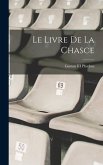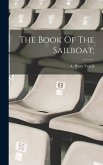La Canne holds a unique position in the development of martial arts in the nineteenth century. It was at once a weapon for self-defense taught in the boxing and savate clubs across France and Belgium as well as a tool for gymnastics and physical education. The canne was taught to the officer class in military academies and to children in public schools. This volume presents two mid-century methods for learning the canne which encompass both these aspects of its use. Larribeau's 1856 A New Theory of the Art of the Canne concentrates more on self-defence and introduces lessons against a mannequin as a teaching method. Humé's 1862 Treatise and Theory of La Canne Royale centres more on the gymnastic and athletic aspects of the canne. Both provide a fascinating insight into the canne before it was codified by Vigny and incorporated into the composite English martial art of Bartitsu.
Hinweis: Dieser Artikel kann nur an eine deutsche Lieferadresse ausgeliefert werden.
Hinweis: Dieser Artikel kann nur an eine deutsche Lieferadresse ausgeliefert werden.








